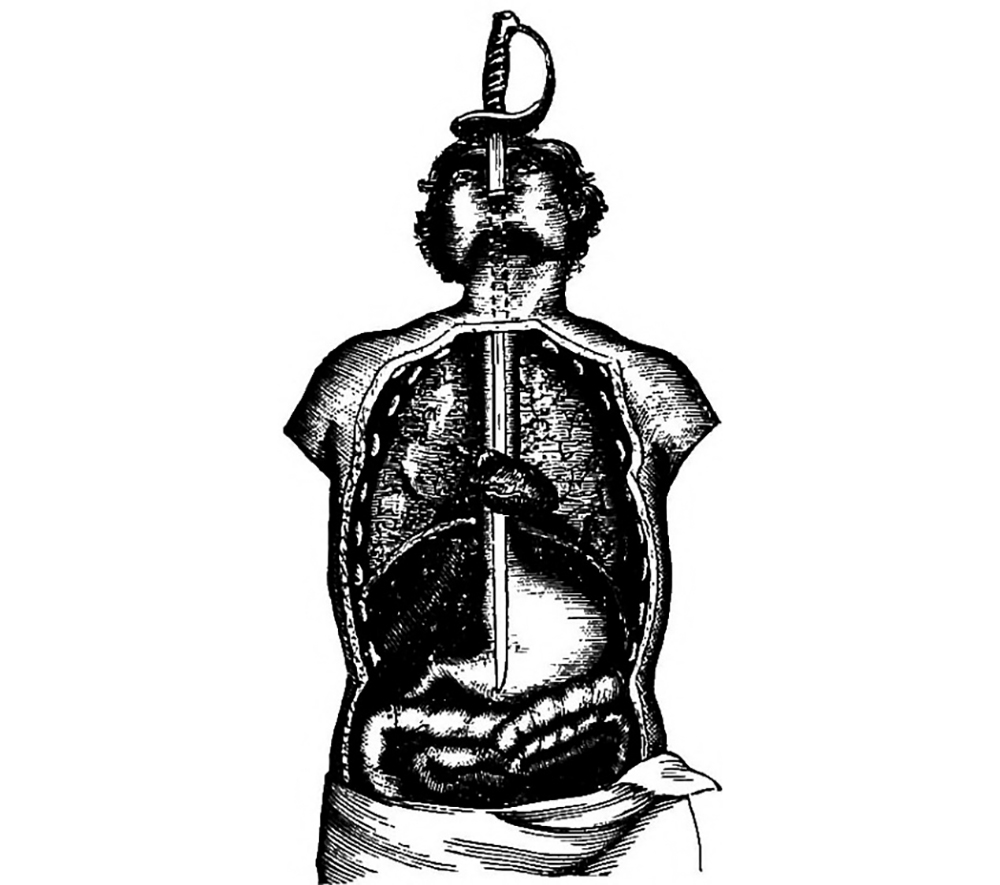
A baraita on Bava Metzia 94a discusses the case of a man who puts impossible conditions on a bill of divorce: “This is your bill of divorce on the condition that you ascend to the skies; on the condition that you descend to the depths; on the condition that you swallow a reed of one hundred cubits; on the condition that you cross the Great Sea by foot—if the condition was fulfilled this is a (valid) bill of divorce; if the condition was not fulfilled (it is) not a bill of divorce. Rabbi Yehuda ben Teima says that (even if the impossible condition wasn’t fulfilled) it is a valid get.”
The condition of swallowing a 100 cubit reed seems unnecessarily impossible. How long is a person’s esophagus, and, indeed, their entire stature? Eruvin 4b presents a Scriptural derivation for the 40 seah measurement of a mikvah. The verse (Vayikra 15:16) stated that a man with certain ritual impurity shall immerse all of his flesh in water. This indicates that the water of the mikvah should be able to contain his entire body, which is a cubit by a cubit, by the height of three cubits. As the Meiri explains, the Sages estimated that a typical person is three cubits tall. Why state 100 cubits and not four?
The answer is that this baraita actually contains an extra clause. It is swallowing (שֶׁתִּבְלְעִי) a reed, as well as bringing (שֶׁתָּבִיאִי) a reed of 100 cubits. Printed texts—Vilna, Soncino, Venice—omit it, as does the Florence 8-9 manuscript. However, Munich 95, Hamburg 165, Escorial, Vatican 115 and Vatican 117 all have this extra clause. In that extra clause, Vatican 117 makes that reed also 100 cubits, but the others don’t.
Haplography
The reading of bringing a reed—שֶׁתָּבִיאִי, was swallowed up by a process called “haplography,” inadvertent omission of repeated letters or words. Haplóos (ἁπλόος) in Greek means single, and graphy means writing. When text is repetitious, might a scribe accidentally skip from the first instance to the second? Think of the Amidah. Have you ever skipped from הֲשִׁיבֵֽנוּ אָבִֽינוּ to הָשִֽׁיבָה שׁוֹפְ֒טֵֽינוּ? Here, the scribe accidentally skipped from one reed to the next.
A copying error in the other direction is called “dittography,” from the Greek “dittós (διττός)” plus “graphy.” This is an accidental duplication. An example of this could be the repetition of “100 cubits” by both reed conditions, because of the preceding word קָנֶה.

Inconceivable!
Once we eliminate the length requirement, is it so hard to swallow a reed? We might point to Yechezkel 40:5, where the קָנֶה/reed/measuring rod held by the copper man was six cubits long. This might then be a standard reed, which is taller than a human being. Alternatively, if we compare with how the baraita is cited in its primary sugya, Gittin 84a, even the printed texts have both clauses of swallowing and bringing a reed, and for swallowing, have עַל מְנָת שֶׁתִּבְלְעִי קָנֶה שֶׁל אַרְבַּע אַמּוֹת, so the reed is four cubits.
Indeed, sword-swallowers only swallow until it reaches their stomach, not their entire body length. According to the Guiness Book of World Records, the longest sword swallowed was 58 centimeters, by Natasha Veruschka in 2009. Other sources have the 7’4” tall George the Giant swallowing a 33 inch (83.82 centimeter) sword. If an amah is 48 centimeters, then four cubits is 192 centimeters, certainly beyond that record.
Finally, I wonder if they deemed these conditions truly impossible, or just practically impossible for most mere mortals—but for a truly impossible condition, even the Sages would agree isn’t a condition. The baraita stated נִתְקַיֵּים הַתְּנַא —הֲרֵי זֶה גֵּט. Is this effectively stating that it is a real condition, and only upon fulfilling the condition—will it be a get—thus contrasting with Yehuda ben Teima? Or, do they envision an implausible fulfillment? A bendable reed, or a person with an extremely tall neck and torso, might manage it. She could walk across the Great Sea with sufficient climate change, drying it out (as it was before the Zanclean Flood) or freezing it so that she could skate across.
Alexander the Great built a causeway (raised road) across the Mediterranean Sea to attack the Island of Tyre. Similarly, Yerushalmi Avodah Zara 18b references Alexander the Great ascending to the heavens and seeing the world like a ball and the sea like a plate. Evidently, Chazal knew the legends recorded in “Alexander Romance,” (also called “Pseudo-Callisthenes”). In the “Alexander Romance,” Alexander hitches a chariot to a griffins and ascends to the heavens, and the world and sea are described in this manner. Alexander also explores the depths of the sea. Alexander could have received his get, even according to the Tanna Kamma.
Rabbi Dr. Joshua Waxman teaches computer science at Stern College for Women, and his research includes programmatically finding scholars and scholastic relationships in the Babylonian Talmud.









